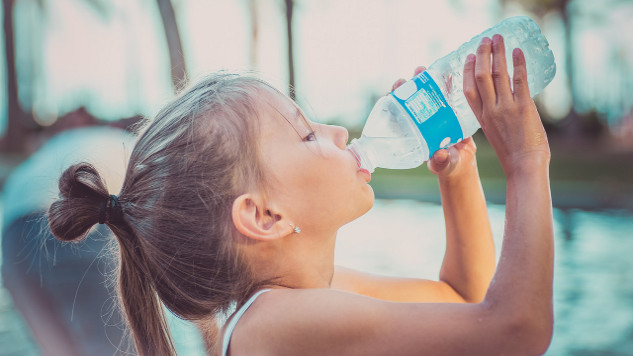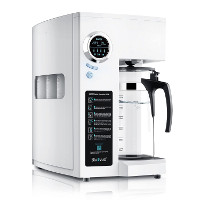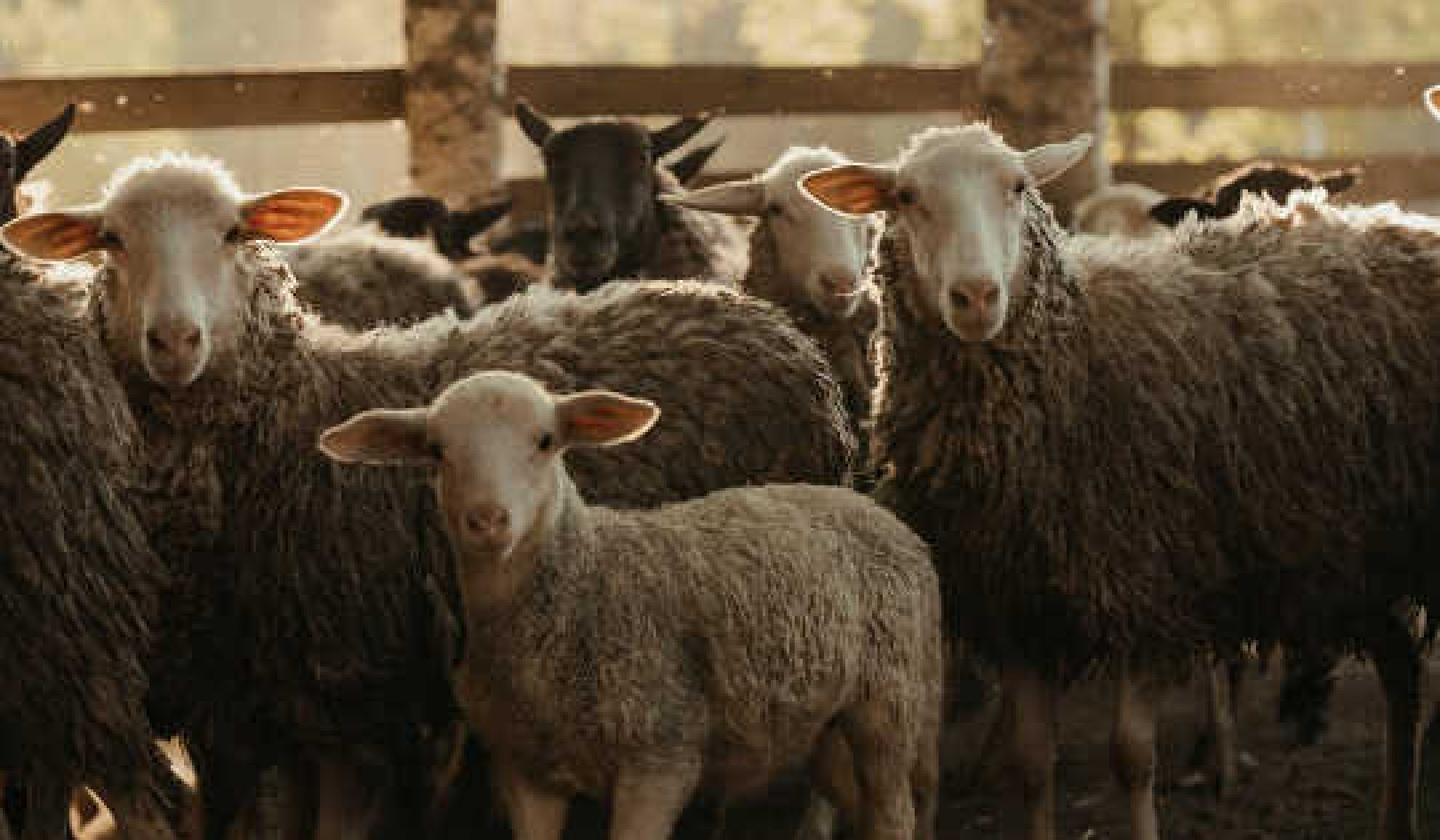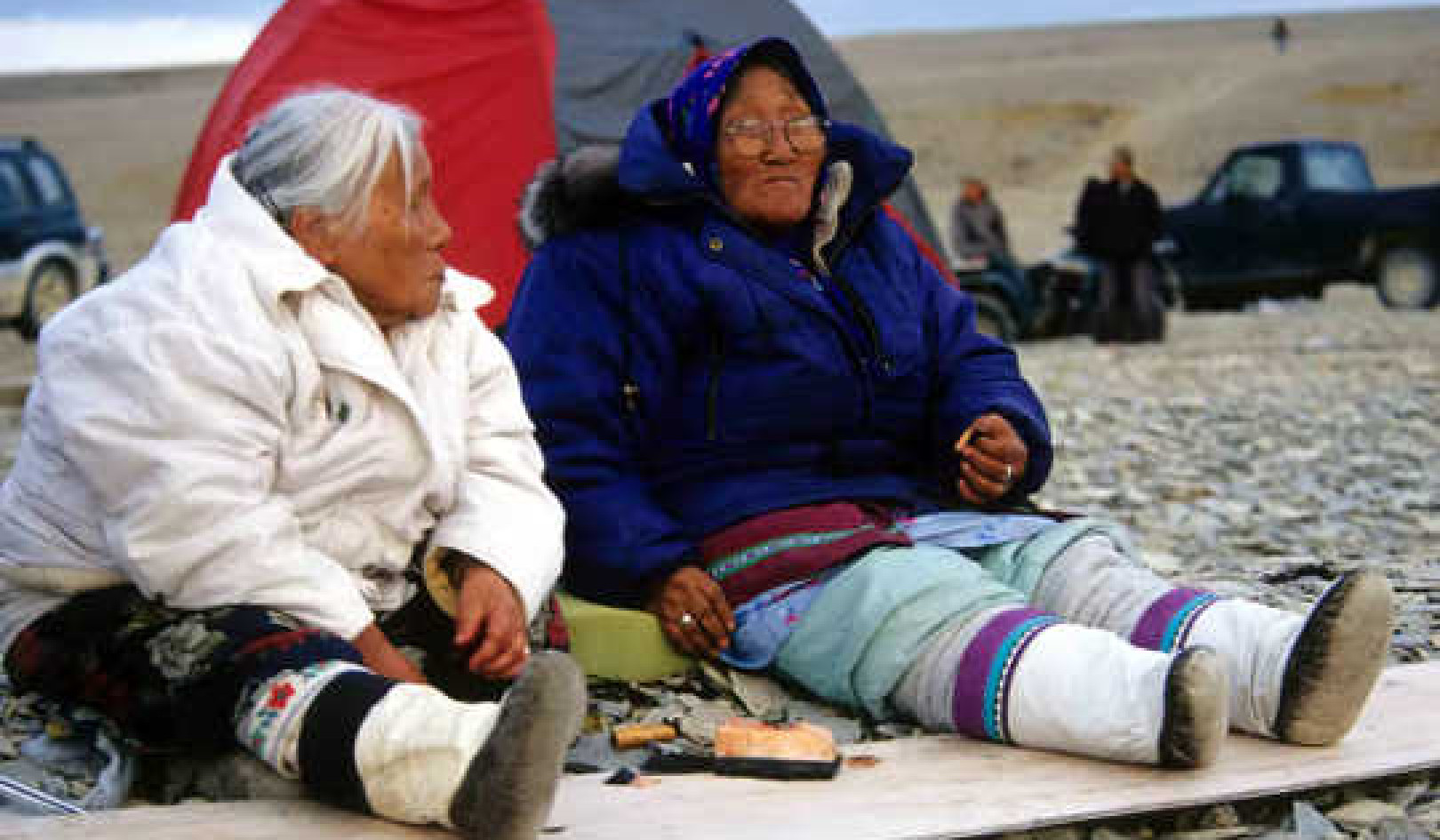
In an age where convenience often takes precedence over concern, plastics have nestled themselves comfortably into nearly every corner of our lives. There's no denying that plastics have brought immeasurable comfort into our daily routines, however, there's a disturbing underbelly to this pervasive substance that's worth our attention. Recently, scientists have unraveled worrying connections between nanoplastics and brain health.
It seems like something straight out of a dystopian novel: tiny, almost invisible fragments of plastic seeping into our biological systems and impacting neural activities, as observed in mouse models. We must consider the implications of such small particles affecting mouse brain activity dramatically. Could similar, yet undetected, effects be occurring in humans? Is it wise to wait for adverse outcomes before taking action?
If the possibility of plastics affecting mental health isn't startling enough, consider this added concern: a noticeable increase in specific cancers, notably in younger adults and kids. It's easy to dismiss this as a by-product of other lifestyle choices or environmental factors, but can we afford to overlook that we're practically marinating in a world of plastics? They're in our water bottles, takeout containers, and even the air we breathe. Nanoplastics are fragmented from the everyday wear and tear of plastic goods.
The confluence of these disturbing health trends and our unabated use of plastics is impossible to ignore. It's high time we confront the harsh realities: our convenient, plastic-wrapped lifestyles may come at a cost far steeper than we imagined, possibly chipping away at the essence of our well-being.
The Environmental Journey of Plastics
In the cycle of life and death, nature has its elegant way of reclaiming what belongs to it, breaking down organic matter to nourish the Earth for future generations. Plastics, however, are the obnoxious guests at Mother Nature's party—refusing to leave when it's time to go. They don't break down and become one with the Earth; they fragment into tiny fugitives that escape natural processes.
We call these fragments microplastics and nanoplastics but don't be fooled by the unassuming names. These particles are microscopic rebels without a cause, small enough to infiltrate almost any natural barrier. They make their way into our rivers and oceans and, from there, into the veins of the planet's ecosystems. Yes, you heard it right; they're in our drinking water and even in the fish that may end up on your dinner table. What's chilling is that these particles are so tiny and pervasive that they find ways to infiltrate the planet's body and ours.
It's tempting to think that something so small could be inconsequential. But just as a whisper can trigger an avalanche, these nanoplastics carry an outsized potential for harm. When they seep into the water supply, they're not traveling solo; they have toxins and pollutants, like hitchhikers, entering our bodies in stealth mode.
Once inside, there's no telling the full extent of their impact—yet. Considering the emerging health indicators, is it prudent to wait for undeniable evidence? The situation resembles a tense drama where we play the main character and the one at risk. As we delve deeper into understanding how plastics affect our health and the world around us, we must seriously question whether the ease of a throwaway culture justifies the substantial hazards coming to light.
Potential Health Risks
Microplastics and Nanoplastics
Numerous research papers have documented the existence of microplastics in human biological samples. A newly published study associating nanoplastics with cognitive decline in mice further intensifies concerns regarding their possible effects on human brain health. While additional studies are necessary, the early findings give cause for apprehension.
Chemical Additives
The concern isn't solely about plastics but also the harmful compounds like phthalates and bisphenol A (BPA) they often contain. These chemicals can infiltrate food and water as the plastic deteriorates. Known for their endocrine-disrupting properties, these substances can lead to various health problems, from reproductive difficulties to developmental delays in children.
Alarming Trends in Younger Populations
Recent statistics indicate a rise in certain types of cancers, including breast and colon cancer, among individuals in their 20s and 30s. Although the connection to plastics is still being studied, the near-ubiquity of plastics in our daily lives suggests that this association warrants serious attention.
Practical Steps to Minimize Exposure
In the Home
On a positive note, there are actionable measures we can adopt to minimize our contact with plastics. One simple change is replacing plastic storage containers with glass or stainless steel alternatives. Also, be cautious of how you store food. Opt for wax paper over plastic wrap to minimize the leaching of harmful substances.
In Food Choices
Being informed is empowering. Understanding the origins of your food and its packaging can significantly lessen potential risks. Opt for fresh, unencased produce instead of processed, plastic-wrapped alternatives when possible.
In Personal Care Products
Many personal care products, like scrubs and toothpaste, contain microplastics or harmful additives. Opt for natural cosmetics and toiletries. Reading labels can make a huge difference in minimizing your plastic exposure.
Water Filtration
A sound water filtration system can effectively remove microplastics, reducing exposure. Check reviews and studies to choose a filtration system that has been proven to remove these particles.
Government and Industry's Role
As individuals, our conscientious choices can undoubtedly make ripples, but let's be candid: the tsunami of change needed to confront the plastic epidemic has to come from higher up—the government and industry stakeholders. Right now, the regulatory landscape surrounding plastics is akin to a loose net with gaping holes; it's there but not entirely practical. And it's not just about banning straws or encouraging recycling; that is child's play compared to the Herculean task before us.
What's called for is a seismic shift in policy and industrial practices. Stricter controls on plastics manufacturing, including what chemicals can be included and in what concentrations, are non-negotiables. Furthermore, our waste management systems need a complete overhaul. Improving recycling is only part of the equation; the real goal is establishing a sustainable economy that minimizes waste and responsibly processes any remaining materials to prevent environmental and health crises.
Significant change isn't merely a matter of laws and policies; it draws from a united hope for a sustainable, health-promoting future that eclipses the limitations of political divisions and economic self-interest. The industries creating plastics also have the resources and ingenuity to develop viable alternatives and sustainable disposal methods. It's high time they transition from being part of the problem to becoming champions of the solution.
If turned towards sustainability, their ingenuity can transform our reality, setting us on a harmonious path with Mother Earth rather than in conflict with her. The truth is, we don't have the luxury of time for prolonged debates or tentative steps. Decisive actions and steadfast dedication are required from those in positions of authority and clout. Ultimately, partial efforts are simply inadequate concerning our well-being and the environment.
Confronting the disquieting facts about plastics and their possible effects on health is more than an individual endeavor; it's a communal rallying cry that resonates clearly in the public consciousness. Yes, we each have a role, from opting for reusable items to scrutinizing the containers that store our food. But the issue of plastic use is too pervasive to be shouldered solely by individual conscientiousness. The case involves reconfiguring our ethical and social frameworks, requiring collaborative initiatives and diverse approaches instead of solo efforts.
New laws must be drafted, business operations need overhaul, and community enlightenment is essential. Minimizing our reliance on plastics resembles a marathon more than a sprint—a collective endeavor that can't be taken lightly. The health safeguards we put in place now won't just benefit us; they'll shape the wellness landscape for generations. It's a formidable responsibility that calls for unyielding dedication and heartfelt commitment.
Related Product
A Revolutionary Water Filter That's More Than Just a Pretty Carafe
 We've become increasingly cautious about our drinking water—especially concerning contaminants like PFAS and nanoplastics. We recently purchased this countertop water filtration device, and it's already become a vital part of our daily life. Its straightforward, plug-in design offers significant benefits, streamlining the setup process and saving time. Since it's not connected to water pipes, it allows for convenient repositioning whenever required. You can even take it on camping trips, as long as you'll have electricity.
We've become increasingly cautious about our drinking water—especially concerning contaminants like PFAS and nanoplastics. We recently purchased this countertop water filtration device, and it's already become a vital part of our daily life. Its straightforward, plug-in design offers significant benefits, streamlining the setup process and saving time. Since it's not connected to water pipes, it allows for convenient repositioning whenever required. You can even take it on camping trips, as long as you'll have electricity.
The high borosilicate glass carafe not only lends an aesthetic touch to our countertop but also minimizes risks of secondary pollution associated with plastic containers. Given our wariness about plastics, this was a significant selling point for us. The carafe sits on our counter, constantly reminding us to stay hydrated—an unplanned but welcome benefit.
What also impressed me is the 4-stage filtration system, which guarantees 99.9% purification. We get immeasurable peace of mind from knowing our tap water is filtered to this degree. The power-saving and water-saving features are the icing on the cake, reflecting a thoughtful design that saves money and aligns well with eco-conscious living.
The filter life monitor is convenient as it can be easy to lose track of when to replace a filter, but this monitor takes out the guesswork by displaying each filter's service life. It also gives you a before and after rating of the water quality.
Customer support and the 1-year warranty are additional perks, making this a worry-free purchase. The 2:1 Pure to Drain ratio means we are getting the most out of every drop of water, which is particularly critical today. The company also has under-the-counter models if that is your preference, but we appreciated the ease of taking this out of the box, flushing out the filters and putting it to use without having to do any major under-the-sink install.
If I could turn back time, I'd wish for this piece of tech 60 years ago. If you;re in the market for a reliable, efficient, and user-friendly water filter system, you need look no further than this one. You won't just be purchasing a water filter but investing in your health and peace of mind. Highly recommended! - Robert Jennings
For more info and/or to order this water filter, click here.
About the Author
 Robert Jennings is co-publisher of InnerSelf.com with his wife Marie T Russell. He attended the University of Florida, Southern Technical Institute, and the University of Central Florida with studies in real estate, urban development, finance, architectural engineering, and elementary education. He was a member of the US Marine Corps and The US Army having commanded a field artillery battery in Germany. He worked in real estate finance, construction and development for 25 years before starting InnerSelf.com in 1996.
Robert Jennings is co-publisher of InnerSelf.com with his wife Marie T Russell. He attended the University of Florida, Southern Technical Institute, and the University of Central Florida with studies in real estate, urban development, finance, architectural engineering, and elementary education. He was a member of the US Marine Corps and The US Army having commanded a field artillery battery in Germany. He worked in real estate finance, construction and development for 25 years before starting InnerSelf.com in 1996.
InnerSelf is dedicated to sharing information that allows people to make educated and insightful choices in their personal life, for the good of the commons, and for the well-being of the planet. InnerSelf Magazine is in its 30+year of publication in either print (1984-1995) or online as InnerSelf.com. Please support our work.
Creative Commons 4.0
This article is licensed under a Creative Commons Attribution-Share Alike 4.0 License. Attribute the author Robert Jennings, InnerSelf.com. Link back to the article This article originally appeared on InnerSelf.com
Books on The Environment from Amazon's Best Sellers list
"Silent Spring"
by Rachel Carson
This classic book is a landmark in the history of environmentalism, drawing attention to the harmful effects of pesticides and their impact on the natural world. Carson's work helped to inspire the modern environmental movement and remains relevant today, as we continue to grapple with the challenges of environmental health.
Click for more info or to order
"The Uninhabitable Earth: Life After Warming"
by David Wallace-Wells
In this book, David Wallace-Wells offers a stark warning about the devastating effects of climate change and the urgent need to address this global crisis. The book draws on scientific research and real-world examples to provide a sobering look at the future we face if we fail to take action.
Click for more info or to order
"The Hidden Life of Trees: What They Feel, How They Communicate?Discoveries from A Secret World"
by Peter Wohlleben
In this book, Peter Wohlleben explores the fascinating world of trees and their role in the ecosystem. The book draws on scientific research and Wohlleben's own experiences as a forester to offer insights into the complex ways that trees interact with one another and the natural world.
Click for more info or to order
"Our House Is on Fire: Scenes of a Family and a Planet in Crisis"
by Greta Thunberg, Svante Thunberg, and Malena Ernman
In this book, climate activist Greta Thunberg and her family offer a personal account of their journey to raise awareness about the urgent need to address climate change. The book provides a powerful and moving account of the challenges we face and the need for action.
Click for more info or to order
"The Sixth Extinction: An Unnatural History"
by Elizabeth Kolbert
In this book, Elizabeth Kolbert explores the ongoing mass extinction of species caused by human activity, drawing on scientific research and real-world examples to provide a sobering look at the impact of human activity on the natural world. The book offers a compelling call to action to protect the diversity of life on Earth.
Click for more info or to order
al



























